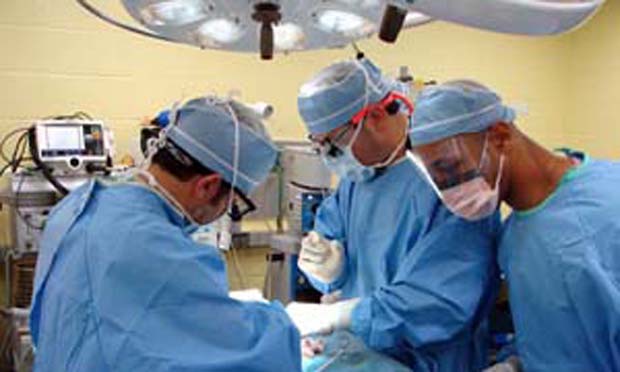From the Scholars Strategy Network, written by Philip J. Cook and Kimberly D. Krawiec, Duke University
Should people be paid for donating a kidney? Two recent Wall Street Journal opinion pieces — one by economists Gary S. Becker and Julio J. Elias and another by kidney donor Dimitri Linde — call for compensation to human donors as a means to relieve the shortage of transplantable kidneys in the United States. Physicians have taken up this cause as well, with recent editorials in the Clinical Journal of the American Society of Nephrology and Medscape Nephrology urging a rethinking of the medical community’s opposition to financial incentives for organ donation. Federal law reinforces traditional norms by forbidding “valuable consideration” in exchange for a human organ, so new legislation would be needed to allow financial compensation.
The kidney crisis
Our compilation of data on kidney transplantation documents a growing gap between demand and supply of transplantable kidneys — a gap that allows about 5,000 patients with end-stage renal disease to die each year while waiting for a transplant.
The growing gap between kidney need and supply became visible after the United Network for Organ Sharing data system first went online in 1995:
- Over the next decade through 2006, transplants increased, but the numbers of patients in need of kidneys grew faster than the supply of kidneys available for transplant.
- Since 2006 the need for kidneys has continued to increase slowly each year, but the rate of transplants has plateaued because of limited supply.
- Prospects are dim for increasing kidney donation rates under the current system. Donations from the living have actually declined since a peak in 2003 and donations overall have stagnated since 2006 at about 16,000. Deceased donors account for the bulk of all kidney donations, but most of the transplants possible from suitable deceased donors are already happening.
After looking very closely at flows on and off the kidney waiting list for a single year, 2011, we estimate the unmet need to amount to at least 21,000 kidneys per year, and very likely more.
Where could more kidneys come from?
In considering where to look for more kidneys, we begin with basic demographics. The criteria used to identify suitable deceased donors have the effect of ruling out donations from all but a fraction of the 2.5 million people who die each year in the United States. Our research provides some detail on this “winnowing” process for the year 2010:
- Almost 2/3 of all deaths happen to people over age 70, almost all of whom are deemed medically unacceptable donors.
- Most remaining deaths happen outside of hospitals in uncontrolled settings like auto accidents, or occur inside the hospital from causes like cancer, diabetes, and renal disease that ordinarily rule out kidney donations.
- The bottom line is that, in 2010, only about 9,000 deaths happened to “eligible” donors — in the sense that the deceased person had healthy organs and was declared dead due to cessation of electrical activity in the brain after the hospital had arranged to preserve blood circulation in the patient. In 70% of those cases the kidneys were in fact donated. An additional 928 donations happened after cardiac deaths (only rarely possible because successful preservation of kidneys under that circumstance is difficult).
Why monetary compensation should be considered
Basic arithmetic shows that even if everyone in the United States had signed an advance consent form allowing donation of organs, and every family honored that agreement at the time of death, only an additional 2,751 donors — yielding roughly 5,500 kidneys — would have been available in 2010. In short, the kidney shortage cannot be eliminated simply by measures aimed at increasing rates of donation from the deceased. Additional kidneys from people who die would be welcome, but will not be nearly enough to satisfy current need, let alone reduce the backlog of sick patients awaiting a life-saving kidney donation. Barring a major breakthrough in recovering organs from deceased patients currently deemed unsuitable, the only plausible solution is to increase donations from the living.
There are other advantages to using more living donors. More transplantable kidneys from live donors would improve health outcomes for those with end stage renal disease and reduce the annual cost per patient. Donating a kidney is no walk in the park, but the medical risks are very low. People can do just fine with a single kidney.
Currently, most people who donate one of their kidneys do so to help someone they know, usually a family member. Education and public outreach might increase the number of altruistic donors willing to make an organ gift to a stranger. But in 2012, only 182 people made such “nondirected” donations — and the trend is downward, not up.
The high and increasingly unmet need for transplantable kidneys prompts many observers — including us — to believe that the time is ripe to reconsider financial incentives. An unregulated market in kidneys would be open to abuses and corruption. A better alternative would be a public agency with sole authority to provide financial incentives for organ donation, after would-be donors are screened not just for good physical health but to ensure that they are making an informed decision after careful reflection. Even with safeguards, some say that putting a price on body parts is bound to be dehumanizing. But markets already exist for blood plasma, eggs, sperm and hair. At the end of the day, objections to compensation for kidney donors must be weighed against the growing loss of health and life caused by our current inadequate system.
Related research: An in-depth paper by Cook and Krawiec, “A Primer on Kidney Transplantation: Anatomy of the Shortage,” is forthcoming in Law and Contemporary Problems, Vol. 77, No. 3. A working version of the paper is available on the Social Science Research Network.
The authors are members of the Scholars Strategy Network, where this post originally appeared.
Keywords: organ donations


Expert Commentary